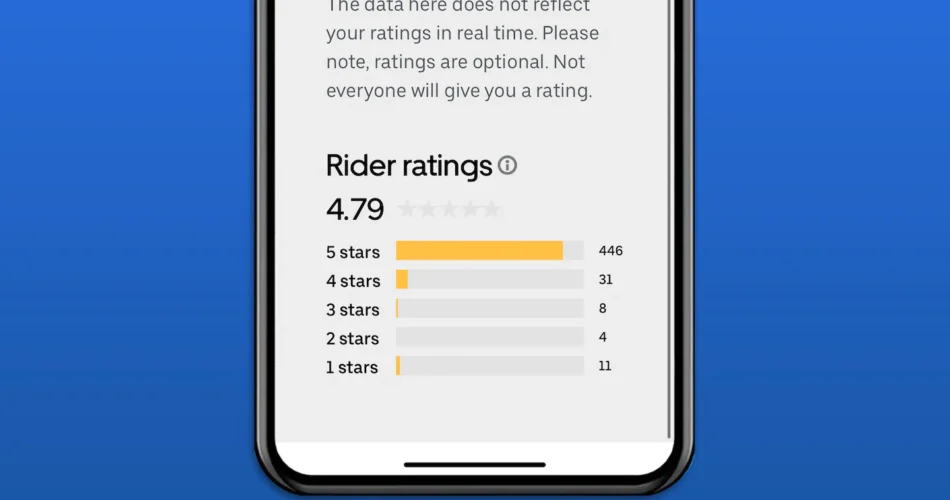To find this information, make sure you’ve updated to the latest version of the app — and that you have a bit of free time and patience. Open Uber, tap on your profile image, tap Settings, and scroll down to tap on the Privacy section. Now select the Privacy Center and swipe to the left under the “Your data and privacy at Uber” section. The third option in says “Would you like to see a summary of how you use Uber?” Tap “See summary” and scroll down to the Ratings section, tap “View my ratings” and you have arrived at your destination. The ratings you have received are under “Rider ratings.”
The results might be surprising, especially if you think of yourself as a courteous passenger. If you know you’re unpleasant, any 1-star reviews could be less of a shock. (Despite having positive scores from 97 percent of my drivers, I will forever wonder what I did to the 11 who gave me one star.)
Ratings on the app have a practical purpose, beyond making you question whether strangers hate you. If driver or a passenger gets consistently low scores, they could lose access to some or all of the company’s services. However, Uber doesn’t have one set cutoff point — the minimum average rating is different for each city in which the company operates. That’s because of cultural differences in how people rate each other, according to Uber.
Those differences might be apparent in the average ratings for each city. Uber this week also shared a ranking of the best and worst cities based on average passenger scores. The top three cities, where riders perhaps slam doors a little less, are San Antonio, St Louis and Nashville. On the other side are the three cities with the lowest average passenger ratings: New York, Seattle and Washington, D.C.
What, exactly, would earn you a low rating from an experienced driver? For Clarke, it’s drinking alcohol in the car, yelling or screaming, not being at the set pickup point, slamming doors, asking overly personal questions, trying to fit extra passengers, adding stops mid-ride, touching him, touching his radio, and throwing up anywhere but the medical-grade plastic bags he has thoughtfully provided.
“Definitely calling me ‘Mr. Uber Driver.’ I have a name,” added Clarke. “Or talking to me in a way that’s degrading or demeaning, makes me feel less-than in my own vehicle.”
So how do you become a better rated rider?
In a blog post announcing the new setting, Uber recommends five ways to be a better rider. The company says take any trash with you, wear your seat belt, be on time, treat drivers with respect and, yes, don’t slam doors.
Uber would not say how often the list is updated with the latest rides, but says there is a delay after a ride to protect the driver’s privacy. Drivers can’t see how a rider tipped them or rated them before they leave their rating, to prevent retaliation in the form of a poor review.
The new feature is part of a “Privacy Center” that Uber has been working on in its app. It also includes a section to see what drivers will be able to see about you, and a place to start a request for a copy of your data as required under CCPA, the California Consumer Privacy Act. Tech companies have leaned into marketing privacy as a feature in recent years. The trend, kicked off by Apple, often takes the form of a nod toward transparency more than any drastic changes to how data collection and targeted advertising work. Companies have also been pushed into many changes by privacy laws in Europe and, more recently, California.
If you are already deep in Uber’s settings, there is a change you can make to improve your own privacy. Go back to the main Privacy Center screen, tap on the Uber Marketing section and turn off the option for Enable Data Sharing. This will limit what the company can share about you with advertisers.
Source link



